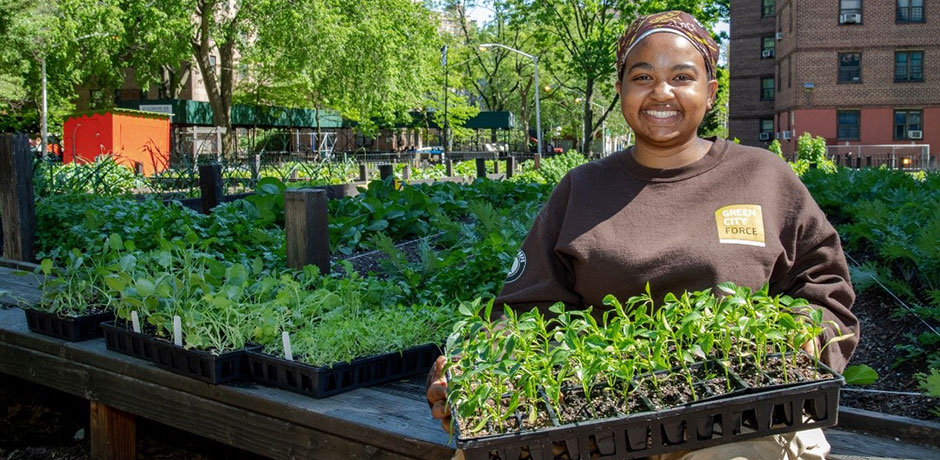Getting The City Blooming To Work
Getting The City Blooming To Work
Blog Article
City Blooming - Questions
Table of ContentsRumored Buzz on City BloomingIndicators on City Blooming You Need To Know8 Easy Facts About City Blooming ExplainedThe Single Strategy To Use For City Blooming
Frequently it is tied to plan decisions to build sustainable cities. Urban farms also supply one-of-a-kind possibilities for individuals, specifically those living in cities, to get actively included with ecological citizenship.Most reliable outcomes are attained when citizens of an area are asked to take on extra energetic duties in the ranch (landscaping). Urban farming is not as managed as commercial farming.
It is not regulated as stringent so a whole lot can occur without being recognized, as for what is applied. Access to nourishing food, both financially and geographically, is an additional perspective in the effort to find food and animals production in cities. The remarkable increase of the world population to city locations has enhanced the requirement for fresh and risk-free food.

The Buzz on City Blooming
The problem of food safety is come with by the related activities of food justice and food sovereignty. These motions integrate city agriculture in how they resolve food-resources of a neighborhood. Food sovereignty, along with advertising food gain access to, likewise looks for to resolve the power characteristics and political economic situation of food; it represents the embedded power structures of the food system, possession of production, and decision-making on numerous levels (i.e.
Agroecology is a clinical framework, activity, and applied technique of agricultural monitoring systems that looks for to achieve food sovereignty within food systems. In comparison to the dominant version of agriculture, agroecology emphasizes the relevance of soil health and wellness by fostering links between the varied biotic and abiotic variables present. It focuses on farmer and consumer well-being, traditional knowledge rebirth, and equalized discovering systems.
For instance, agroecology has been integral to social activities bordering public demand for sustainably expanded food without pesticides web link and other chemicals. Under an agroecological structure, city farming relieves far more than merely food insecurity by likewise urging discourse about all aspects of neighborhood health from physical and psychological health to neighborhood connectedness
A growing glass container with mung beans in itIn basic, Urban and peri metropolitan farming (UPA) adds to food availability, especially of fresh fruit and vegetables, provides employment and earnings and can add to the food security and nutrition of city residents. Urban and Peri-urban agriculture (UPA) expands the economic base of the city through manufacturing, processing, product packaging, and advertising and marketing of consumable products. UPA supplies employment, revenue, and accessibility to food for urban populaces, which assists to eliminate chronic and emergency situation food instability. Persistent food instability describes less cost effective food and expanding city destitution, while emergency situation food instability connects to failures in the chain of food circulation. UPA plays an important role in making food more economical and in offering emergency materials of food.
Excitement About City Blooming
The demands of metropolitan landscape design can be integrated with those of suv livestock farmers. (Kstovo, Russia) Urban agriculture can have a big influence on the social and emotional health of individuals. UA can have a general favorable impact on community wellness, which directly affects people social and emotional wellness. Urban gardens are often locations that help with favorable social interaction, which also contributes to total social and psychological wellness (https://dzone.com/users/5164299/cityblooming.html).

This can likewise raise serotonin degrees akin to functioning out at a health club. There is the added component of walking/biking to the yards, better boosting physical task and the benefits of being outdoors.
Due to the food security that includes UA, feelings of independence and empowerment commonly develop. The capacity to produce and expand food for oneself has actually likewise been reported to boost degrees of self-esteem or of self-efficacy. Homes and little areas make use of uninhabited land and add not just to their family food needs but likewise the requirements of their resident city.
The Of City Blooming
They advertise nourishment and totally free money for non-garden foods and other products. As an instance, you can increase your own hens on an urban farm and have fresh eggs for only $0.44 per lots.
A veggie yard in the square in front of the train station in Ezhou, China Some neighborhood city ranches can be fairly efficient and help women locate job, that in some instances are marginalized from locating work in the formal economic climate. Studies have actually revealed that engagement from ladies have a greater production rate, for that reason generating the sufficient amount for household consumption while providing extra for market sale.
Report this page